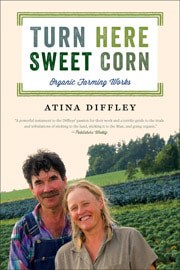Flavor – Growing Vegetables
I recently received an email from writer Deborah Madison asking, “What do you think makes for good flavor in vegetables? Why is it the organic carrots I buy from my dearly-loved co-op are nearly tasteless, and the gnarly old things I pull out of my garden is delicious?”
A book could be (and is needed) on this topic. Here’s my short reply.
Organoleptic Quality
(the taste and aroma properties of a food)
There are many components contributing to flavor in vegetables, including:
• Fertility – soil type, nitrogen, and mineral levels
• Water – soil type, rain, and irrigation
• Cultivars
• Freshness and Post-Harvest Handling and Aroma
• Maturity at Harvest
• Growing Temperature
Fertility
Starting with fertility, excess nitrogen causes a plant to grow too fast, the cells grow larger and thinner and weaker and less flavorful. Slow release fertility, such as compost and decomposing soil-building crops, produce better flavor than water-soluble nitrogen from a synthetic source. Chemical fertilizers, and pesticides can also bring bitterness into the food.
Minerals contribute to flavor. Think of the difference between eating kelp and sugar. How does each make you feel? (The kelp analogy as the mineral and the sugar as the nitrogen.)
In general, the more clay and organic matter in the soil, the higher the minerals and nutrients and the higher the cation-exchange capacity. (CEC) (CEC is highly dependent upon soil texture and organic matter content.) Carrots generally taste best from soils that have clay as part of their structure. They generally look best grown on sandy loam soils.
Water
While vegetables gain flavor from mineral rich clay soils, the water holding capacity of clay soils can be problematic and cause loss of flavor. Crops like melons and tomatoes taste best if they do not have too much water. Too much rain or irrigation at the wrong time can “water down” flavor of many crops.
Each plant has different water needs and timing. Melons will be mushy and not sweet if they have too much water in the last few weeks. Broccoli and kale will be bitter and mustardy if it doesn’t have enough water at the end.
Cultivar
Cultivars make a big difference. Most of the effort in breeding has been toward desired agronomical traits, such as high yields, ease of mechanization, perfect visual appeal, enhanced shelf life, etc. Flavor and aroma are often lost in breeding. Farms who sell on a national wholesale market are affected by consumer preferences for uniformity. Generally consumers are more tolerant of odd sizes and shape when shopping direct from the grower or from their own gardens. In stores they shun produce displays that are not uniform. This is an area were educating consumers can make a big difference.
Freshness and Post Harvest Handling and Aroma
For most vegetable crops, quality and flavor cannot be improved after harvest. * Once the vegetable is removed from the plant they begin the process of decomposition and returning to the soil. Cooling and holding vegetables at their ideal temperature affects how long they hold flavor and water. High respiration crops, like spring greens and asparagus and sweet corn rapidly lose eating quality. Cooling them and maintaining their ideal temperature is crucial to port harvest quality.
But low respiration vegetables like root crops are also affected. They may stay crisp and look fresh, but aroma and flavor is one of the least stable elements and of the first characteristics to be lost after harvest.
* One exception is crops that convert starch to sugar during storage.
Some crops like squash convert the starch in them to sugar after harvest. High-sugar cultivars do not store as long as high starch cultivars. As the starch converts to sugar the fruit becomes more susceptible to spoilage. This is the perfect natural system for us eaters, as we can move from cultivar to cultivar for months, eating the cultivar that is at peak sugar and flavor. In our house it generally goes like this—sweet dumpling / buttercup / delicata / acorn / butternut / hubbard—taking us from September into February.
Maturity at Harvest
We all know about “ghost tomatoes.” Picked green for ship-ability, they look like a tomato, but there is no flavor. However, the best time to harvest a tomato is not red-ripe, but between physiological maturity (when the seeds are mature and can reproduce) and red stage.
Maturity at harvest affects all vegetables. A very young kale leaf is not tough enough to be sold as bunched kale, but harvested fresh from the garden it is absolutely tender and sweet.
Growing Temperature
Temperature during growing impacts many vegetables. Examples: Tomatoes, melons, cucumbers will taste best maturing in warm weather, kale, lettuce, broccoli, cabbage will taste best in cool.
Summary
For me this all leads to: Home gardens are wonderful! Even a one-gallon pot can be the source of delicious food and an educational delight for kids who love engaging in the miracle of a seed becoming food and the connection to life process. If you don’t grow your own, shop from organic-local growers whenever possible. And thank you-THANK-YOU to the farmers who are willing to endure the brutality of the national wholesale market for providing us with organic vegetables when organic-local is not available.
© Atina Diffley 2012

Read Atina Diffley's Blog: What Is A Farm?
Subscribe By Email. It’s Free
Enter your email address:
Worshops & Consulting
Visit Organic Farming Works LLC for Workshops and Coaching/Consulting with Atina and Martin Diffley.



